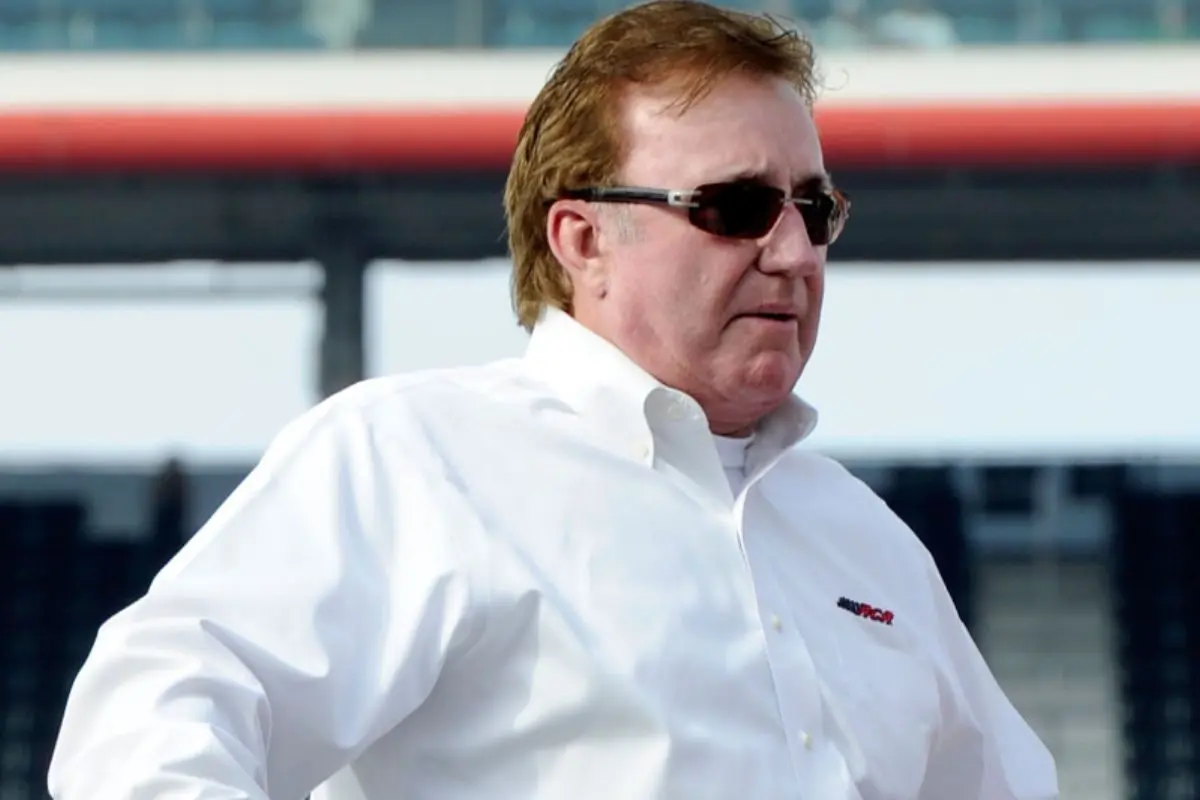How Richard Childress Used a Massive Payday: In a enthralling turn of fortune, Richard Childress transformed a modest payday from the 1969 Talladega race into the cornerstone of his future racing empire. With just $3,000, he invested in land for his initial garage, marking the beginning of Richard Childress Racing (RCR). From acquiring sponsorships with giants like Wrangler Jeans to crafting groundbreaking partnerships, Childress not only reshaped NASCAR’s landscape but also set RCR on a path to over 200 victories and 16 championships—an inspiring tale of perseverance and vision that beckons further exploration.
Key Highlights
- Richard Childress used $3,000 from the Talladega race to invest in land for his first garage.
- He reinvested initial earnings into expanding RCR’s infrastructure and team facilities.
- Childress secured major sponsorships, like Wrangler Jeans, enhancing the team’s competitive edge.
- He diversified revenue through merchandise, partnerships, and strategic alliances with automotive companies.
- Childress’s innovative sponsorship strategies helped build a sustainable and successful racing empire.
Richard Childress Racing’s Legacy and Achievements
Founded on determination and a vision for excellence, Richard Childress Racing (RCR) has etched an indelible mark on the NASCAR landscape through its remarkable legacy and achievements. As a veteran organization, RCR boasts an impressive array of accolades, including 16 championships and over 200 victories. Integral to this legacy are three coveted Daytona 500 wins and three Brickyard 400 successes, highlighting the team’s skill on the track and its ability to rise to the occasion during the sport’s most prestigious events.
Richard Childress, the mastermind behind RCR, initiated this formidable empire with seed money from NASCAR founder Bill France Sr., a reflection of the network and opportunities that propelled the team’s inception. This financial enhancement laid the foundation for a dynasty that would not only participate but also dominate in the fiercely competitive world of NASCAR.
Delving deeper into RCR’s legacy, each championship and victory reflects a narrative of resilience, precision, and an unyielding pursuit of perfection. The organization’s successes are not merely statistics but rather chapters in a storied history that highlight the dedication of its drivers, crew, and leadership.
These achievements resonate with fans and stakeholders similarly, symbolizing the heights that can be reached through vision and tenacity. Richard Childress’s path from humble beginnings to the pinnacle of NASCAR excellence exemplifies a legacy built not just on victories but on an enduring spirit of innovation and perseverance.

The 1969 Talladega Superspeedway Race and the Boycott
The 1969 Talladega Superspeedway race, an event steeped in controversy, marked an essential moment in NASCAR history. As the inaugural race at the freshly constructed 2.66-mile superspeedway loomed, safety concerns overshadowed the excitement.
The prelude to the event was tainted by severe tire issues, with drivers fearing for their safety at the high speeds of the massive track. Despite these concerns, NASCAR founder Bill France Sr. sought to allay fears by personally driving on the track to demonstrate its safety. However, his assurances fell short of convincing the Professional Driver Association (PDA), led by the legendary Richard Petty.
The PDA, advocating for a postponement, urged a reevaluation of the conditions. Yet, France remained resolute, refusing to yield to their demands. This impasse led to a dramatic standoff, culminating in the PDA’s decision to boycott the race. The boycott was a bold move, reflecting the drivers’ collective concern for safety over spectacle.
It emphasized a tension between drivers and management that would resonate throughout NASCAR’s evolution. This moment was significant, not only for its immediate impact on the race itself but also for the broader implications within the sport.
It highlighted the drivers’ increasing agency and the need for dialogue on safety standards. The Talladega race consequently stands as an indication of the evolving dynamics within NASCAR, where the balance between competitive fervor and safety would continue to shape the sport.
Bill France Sr.’s Offer to Richard Childress and the Race
In the burgeoning world of NASCAR, 1969 was an essential year, marked by tactical moves and daring decisions. At the heart of the drama was the audacious navigation of Bill France Sr., the founder of NASCAR, who faced the challenge of a driver boycott at the Talladega Superspeedway‘s inaugural race.
Amidst this turmoil, a young Richard Childress, who had recently left his job to chase the dream of NASCAR racing, was presented with a defining opportunity. France’s initial offer to Childress was a modest yet calculated $500 to compete in a road course race prior to Talladega. This invitation, rather than being a mere financial transaction, was a deliberate move to secure Childress’ participation and allegiance.
“Bill Sr. gave us four five hundred bucks to come and race. That first race on the road course was on Saturday, so we did that and the race was over. But when it was over, we knew the other guys were boycotting Bill France Sr.”
He said, ‘Look, I’ll pay each one of you so much money,’ it might have been another 500 bucks plus what you win. And back then money was hell, you’re 500 bucks with real money. So we stayed in the race and ran the race…I won another $1500 (approx)” – Richard Childress
However, as the race concluded, Childress found himself amidst a rapidly escalating conflict, where Professional Drivers Association (PDA) members were boycotting France’s event due to safety concerns. Undeterred, France was determined to press on with the Talladega race, despite the formidable absence of many seasoned drivers.
For Childress, this experience was significant, marking the beginning of his illustrious path in NASCAR. It was a confirmation of how seizing such opportunities, even in uncertain times, could lead to monumental career strides.
Richard Childress’ Earnings and the First Garage Construction
Richard Childress emerged from the tumultuous Talladega race not only with a newfound reputation but also with a considerable financial gain that would serve as the foundation for his future in NASCAR. The race, known for its unpredictability and intensity, became a pivotal point for Childress, who capitalized on an unexpected opportunity. With the promise of an extra $500, plus his race winnings, Childress managed to amass approximately $3,000—a notable sum in the racing world of that era.
“I left Talladega that Sunday evening with more money than I’d ever seen in my life, probably 3000, 2500, whatever it was…so I took that money, come back about a little piece of land, built my first garage.” – Richard Childress
This windfall was more than just a financial enhancement; it was a catalyst for Childress’s ambitions. The money he earned that week represented more than he had ever seen, and he wisely chose to invest it in a tangible asset that would become the cornerstone of his career: his initial garage. By purchasing a small piece of land, Childress laid the literal and metaphorical foundation for what would eventually grow into a racing empire.
The construction of this initial garage was not merely a physical expansion but a tactical move that signified Childress’s commitment to the sport. It provided him with a dedicated space to hone his skills, refine his operations, and prepare for future races with a professional edge. This infrastructure allowed Childress to shift from a promising driver into a savvy team owner, setting the stage for the formation of Richard Childress Racing (RCR).
Richard Childress’ Racing Career and Legacy
Emerging as both a driver and a visionary, Richard Childress transformed his racing career into a legacy that would shape NASCAR’s landscape. His expedition began humbly in the lower tiers of NASCAR, racing in the Xfinity Series for 13 races across 1969 and 1971. It was a modest start that belied the grand heights he would eventually reach.
Childress’ foray into the Cup Series began in earnest in 1972, where he raced for his own team and briefly for Warren Racing. His stints with Garn Racing from 1973 to 1975 were a showcase to his relentless pursuit of excellence. Eventually, he returned to his own team in 1976, racing until his penultimate appearance at the Riverside International Speedway in 1981.
Childress’ racing career, marked by 76 top-10 finishes in the Cup Series and three in the Xfinity Series, was just the prelude to his grander vision as a team owner. Today, his legacy is enshrined in the continued success of Richard Childress Racing (RCR), a team boasting formidable talents like two-time Cup Series champion Kyle Busch and his grandson Austin Dillon. In the Xfinity Series, drivers Austin Hill and Jesse Love carry forward the torch of excellence.
News in Brief: How Richard Childress Used a Massive Payday
Richard Childress’ tactical utilization of a crucial financial opportunity laid the foundation for a formidable racing empire. The decision to capitalize on Bill France Sr.’s offer following the 1969 Talladega Superspeedway race exemplified astute foresight and resilience. This initial investment in infrastructure, coupled with a steadfast dedication to excellence, propelled Richard Childress Racing to prominence. The legacy of Richard Childress endures through sustained achievements in motorsport, highlighting a narrative of visionary leadership and enduring impact in the racing industry.
ALSO READ: Richard Childress Reflects on Austin Dillon’s Daytona Victory That Took Family to New Heights




